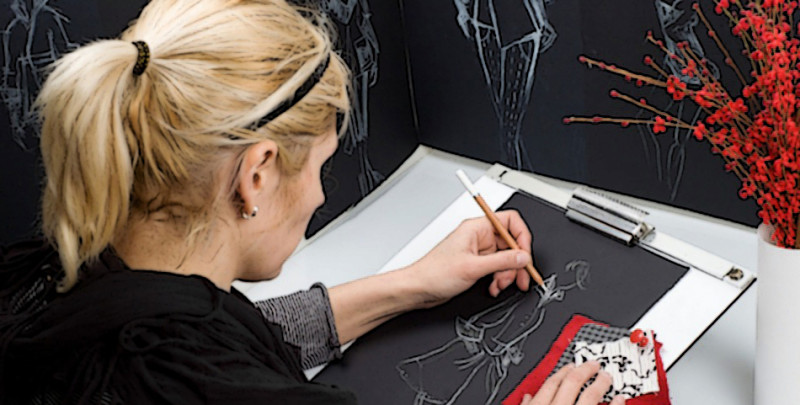
Do I Have What it Takes to Start My Own Design Business?
You're in the design industry and asking yourself, "Do I have what it takes to start my own design business"? The first step is to congratulate yourself. Asking the question and having the guts to follow through is a step that many aren’t able to realise. I remember the feeling of first understanding that Offset Warehouse was what I was meant to do, and nothing is as exhilarating. Here are a few things you can ask yourself, before you go any further, to decide whether you have what it takes:
Are You A Designer or A Business Person?
Take a deep breath and think about if you want to start a business or if you want to design. Thought you could both? The reality is, in most cases, you probably won't or shouldn't. Of course, industries like fashion and textiles are a perfect mix of creativity and commerce, but starting a business means running a business. If you would like to keep most of your time designing rather than scouring for potential investors, putting together business documents, looking for partnerships and scrutinising every part of your budget, then maybe working for a label may be better rather than setting out in business. Alternatively, think about joining forces with someone eager to manage the business or design side.
Starting a business means running a business #business advice

Are You Offering Something Different?
Offering something different is vital, so you must know what makes your product or service unique. Fashion and textiles are hugely competitive industries and without a stand-out product you may find that your returns diminish because customers prefer more established brands offering the same style or ethos. Always take customer feedback and be sure to look at your competition. Know if hand-sewing your product is really worth the price to your customers or your target demographic, and is your competitor selling a similar product for a lower price?
Know what makes your product unique #business #start-up


The First Years Are The Worst Years
Lastly, make sure that you have the drive to invest in your company constantly for the first few years at least (unless you've got the funds and experience to hand the reigns over to a manager). Many people don't tell you when you start out, that on average, companies don't make any profit for the first two to three years. And it takes five years for a company to be fully sustainable. Do you have the drive and determination to stay strong and keep the faith for this amount of time?
The first few years I spent promoting Offset Warehouse and trying to attract potential clients was one of the most difficult and testing times of my career, but I experienced much growth and learned a great deal as an entrepreneur. Having the drive, and the tenacity to commit to a business and having the courage to still scope out every market, every funding and partnership opportunity is vital.
Now we've gone through the basics questions that you should ask yourself before you start, what's the next step? How should you prepare yourself to start a business? My business demanded a lot from me, and here are some of the things you can prepare for as you begin the process:
The Essentials: What You Need To Get Started
If that doesn't shake you then congratulations, you may be looking to begin your own start-up! Once you know this is the direction you want to take, you need to consider if you have all the resources you may need. The three biggest categories of which are: publicity, funding, and contacts.
1. Publicity
In terms of publicity, PR reps are important for securing and disseminating new developments and accomplishments within your brand. The reality? PR is expensive, and often doesn't produce the results you're expecting. If you're money-conscious like me, you will probably end up doing this part yourself, so make sure you keep a clear database of names and addresses before you've launched. And when you're ready to launch, you've got your list of contacts all ready to go. The hours spent putting together press releases and emailing each journalist is exhausting, but there's nothing like seeing an article you've worked on get published.
2. Funding
Like many other designers, you will find that funding is your biggest hurdle. Look for family and friends as potential funders, Kickstarter sites, awards and grants, and future investors at trade shows and conferences. Funding can fall into two categories: equity investors, who invest in your company for a certain share of ownership and hopes of positive returns, and debt financing: where you take out loans from a bank and factor interest payments into your business and budget. Both come with their own pros and cons. You can find out more details about potential funding resources here.
3. Contacts
You will need additional contacts that can give you the names of factories that can produce small amounts of your products for reduced prices. You will need lawyers, bankers, stylists, production assistants, etc. Many of these things are not learned overnight or even through just a few websites, so coming into a business with experience is a big plus. Many designers may choose to work for a production house or even in costume design to understand how to regulate and organise a creative process into an enterprise. If you don't have the contacts, it may be hard to hear, but consider getting some more experience. These endeavors may seem like putting your dream on hold, but understanding another person’s failures and successes are the most invaluable lessons as a future entrepreneur.
Pooling resources takes a serious long-term time commitment and organisational expertise in order to be able to continue onwards with establishing your start-up. It is important to remember as you manoeuvre through this phase to not let mistakes or failures keep you from deserting the process!
Most importantly, know your product. Know it inside and out, it's market, and your potential audience. This may mean different things for different designers. In its essence, make sure you know what you are talking about, whether its taking an extra class in interiors, or continuing to sew and understanding the feel, texture and differences in your textiles. This is essential to offer a growth potential to investors and make your business a success.
Moving Forward: Making It Concrete

As you move beyond the essentials, start thinking about and formulating a business plan. This should include the most general information about your company such as your mission and company objectives to the very finest details like the role of every position in your company, the budget breakdown and projected returns on the investment. Click here for an example of a business plan for your start-up.
Go For It!
Starting a business is not an event: it does not have a clear end and beginning. It’s a continuous, challenging process that takes time, effort, confidence and a lot of evaluation. Remember - you can't do it all yourself! So get as much advice as you can. Take your products to focus groups, attend networking events, business seminars. Seeking the right help from the very beginning can make the often intimidating and complex process of starting your own design business that much easier.
If you like these articles, then please do sign up to our monthly newsletter, where I round up all the latest posts. You can tweet the article using the tweet buttons throughout the article and below.
Starting a business is not an event: it does not have a clear end and beginning #business #start-up

You can't do it all by yourself! #business #advice #startup #fashionbusiness

